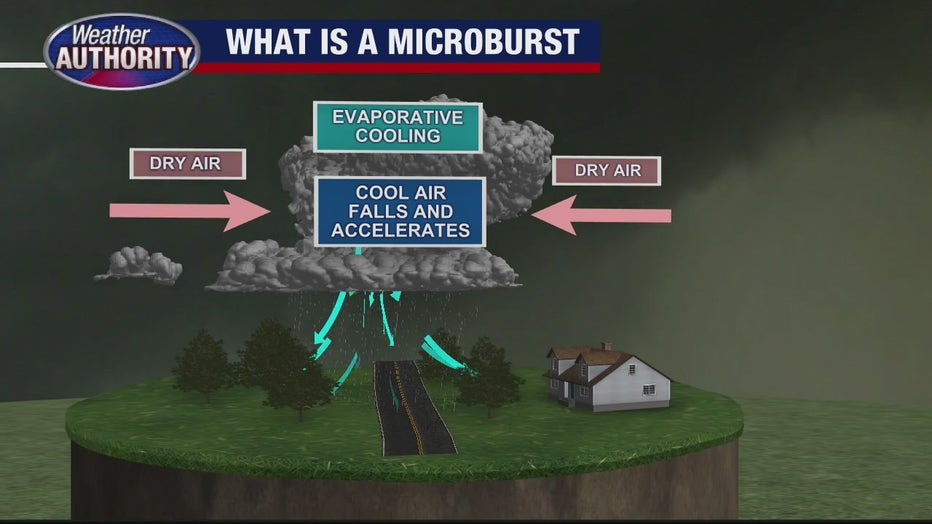What is a microburst and how do they form?

Derek Kevra explains how a microburst forms and why it's probably what hit Farmington Hills
When Wednesday afternoon's storms pushed into Metro Detroit, it put over 100,000 people in the dark and many thought a tornado had formed in Farmington Hills but it may be a different weather phenomenon.
SOUTHFIELD, Mich. (FOX 2) - When Wednesday's strong weather pushed into Oakland County, many people in Farmington Hills believed a tornado had hit the area. Especially near 11 Mile and Orchard Lake which was hit particularly hard. But that may not be the case.
The way the storm pushed in and how it knocked over trees and power lines in some areas but not in others, which leads Meteorologist Derek Kevra to believe it may have been an entirely different phenomenon.
The storm was definitely not a tornado so what was it? Derek thinks it was a microburst
What is a microburst?
A microburst happens in clouds that are really big and about 30,000 or 40,000 feet up in the atmosphere.
Inside of those clouds is a lot of wind and the wind actually keeps the raindrops and ice chunks which would otherwise be hail - inside and suspended in the cloud.
RELATED: Over 100,000 without power after Wednesday storms
Eventually, the cloud gets too heavy and everything falls out of the cloud.
When the water rushes out, it creates a massive burst of wind.
How a microburst hits the ground
When the burst of wind comes out, it could be as high as 100 miles per hour that aren't twisting like a tornado twists. Instead, it's usually a straight-line wind.
What's different about a microburst is they tend to hit in small chunks - unlike a tornado, which hits and tracks in a line.
A microburst will hit maybe one or two blocks and then the neighboring streets are fine.

What is a Microburst?

